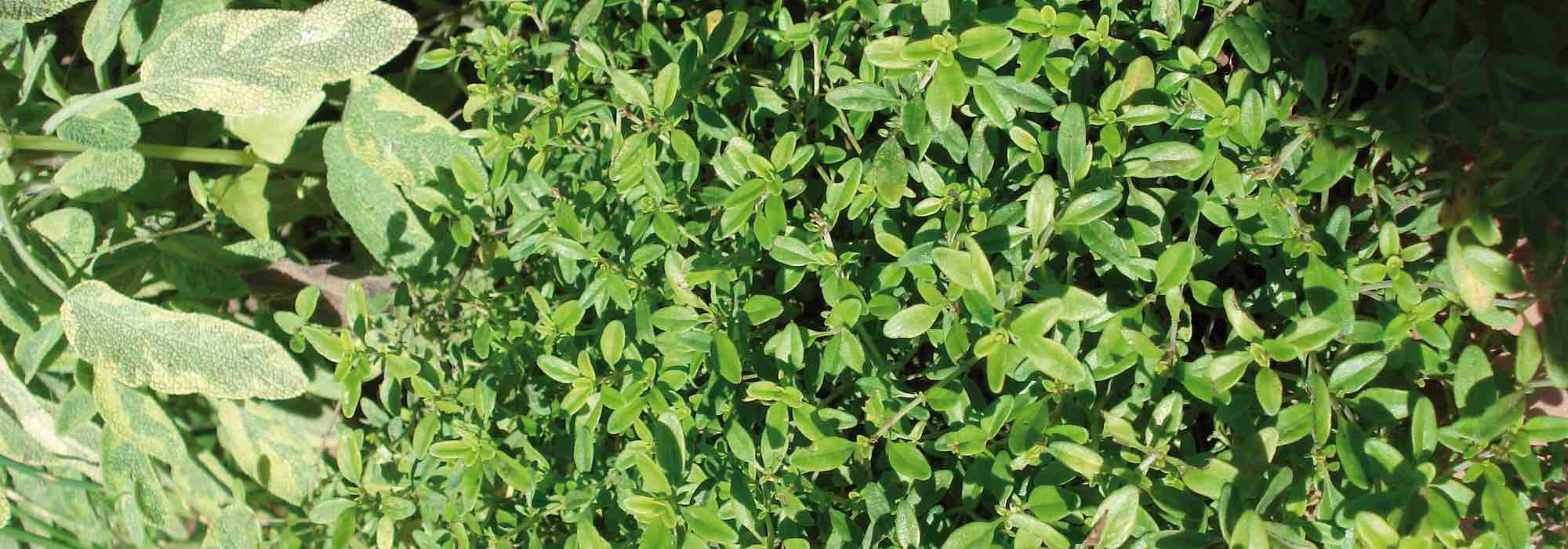
How to grow thyme in a pot?
All our tips to use your own aromatic herbs in the kitchen!
Contents
Wonderfully fragrant and prized for its rich flavours in cooking, thyme grows wild across much of the Mediterranean. Of course, you can also grow it at home to have your own herbs for cooking!
Available in different forms depending on chosen varieties (creeping, ball-shaped, etc.), thyme is a hardy, easy-to-grow plant. If you follow planting and care advice and ensure it receives as much sun as possible, you’ll reap the benefits quickly. Discover everything you need to know to grow thyme successfully in a pot, in the garden, on a terrace or on a balcony.
Thyme, an aromatic herb easy to grow in a pot
As a general rule, one truth is widely accepted: thyme is easier to grow in a pot: several concrete reasons make this very clear.
Specific requirements regarding soil type
Thyme is a relatively demanding plant as regards soil type: it is grown in light, even stony, and above all well-drained soil. If you know that soil in your garden is generally damp, you should favour growing in a pot, because thyme fares very badly with a surplus of water – whereas it generally copes rather well with dryness.
For example, if you grow thyme in clayey, damp soil over winter, it may wither and even end up rotting.
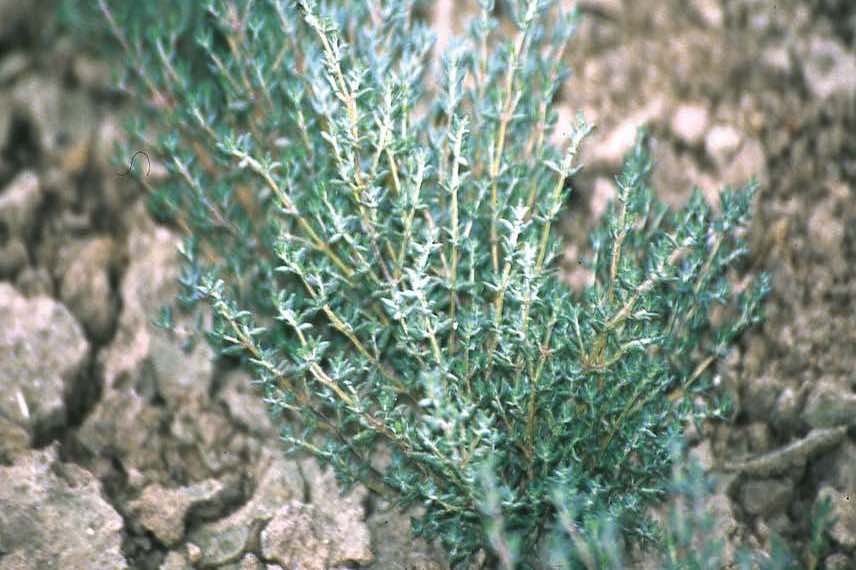
The need for maximum sunlight, a real advantage for growing in a pot
Choosing to plant in a pot is also interesting because of thyme’s needs in terms of sunlight. Ideally, expose it to the sun’s ray florets for several hours each day. With a pot, you can easily move the container so as always to keep your plant well exposed. Conversely, this choice also allows you to bring young plants inside during cool spells, or when heavy rain is expected.
Read also
Thyme: growing, planting, pruningWhen to plant thyme in a pot?
Ideally planted between March and April, thyme can also be sown in early autumn, before October.
Discover other Herb perennials
View all →Available in 2 sizes
Available in 2 sizes
Available in 1 sizes
Available in 2 sizes
Available in 2 sizes
Available in 1 sizes
Available in 2 sizes
Available in 1 sizes
Available in 1 sizes
Available in 1 sizes
How to plant a thyme plant in a pot?
Choose a pot at least 20 to 25 centimetres in diameter, or a large planter. You can pair it with other aromatic herbs that, like thyme, do not need much water – notably oregano and rosemary.
Start by laying a 3 cm layer of gravel or clay balls to aid drainage, then add a mix made up of 50% potting compost and 50% garden soil. Note that you can use only potting compost if you don’t have a garden. Water lightly and don’t forget to place your pot in the sun!
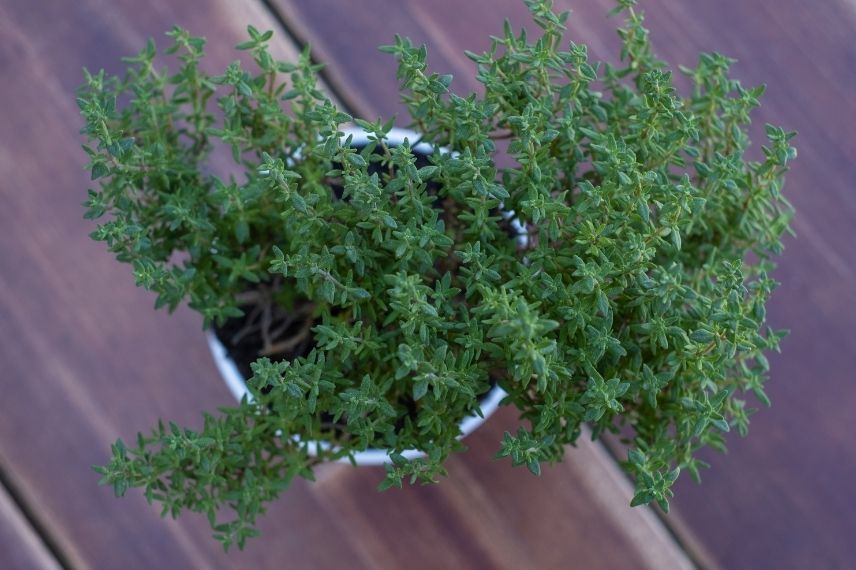
Read also
How to dry and properly store thyme?How to sow thyme in a pot?
To sow thyme seeds :
- Fill the pot with potting compost ;
- Sow a few seeds ;
- Cover with a little potting compost ;
- Water gently using a spray bottle.
How to care for thyme in a pot?
How to water thyme in a pot?
You can water thyme occasionally but very sparingly, as it does not need much water and dislikes waterlogging. Allow soil to dry out between waterings. Remove the saucer from the pot to prevent roots from sitting in water for too long. You can even raise the pot to speed up drainage, to avoid any build-up of moisture that could be harmful to thyme.
How to care for thyme in a pot? Repotting and pruning
Don’t hesitate to repot occasionally. Stems can become woodier after a few years: you can repot your young plants on average once every four years.
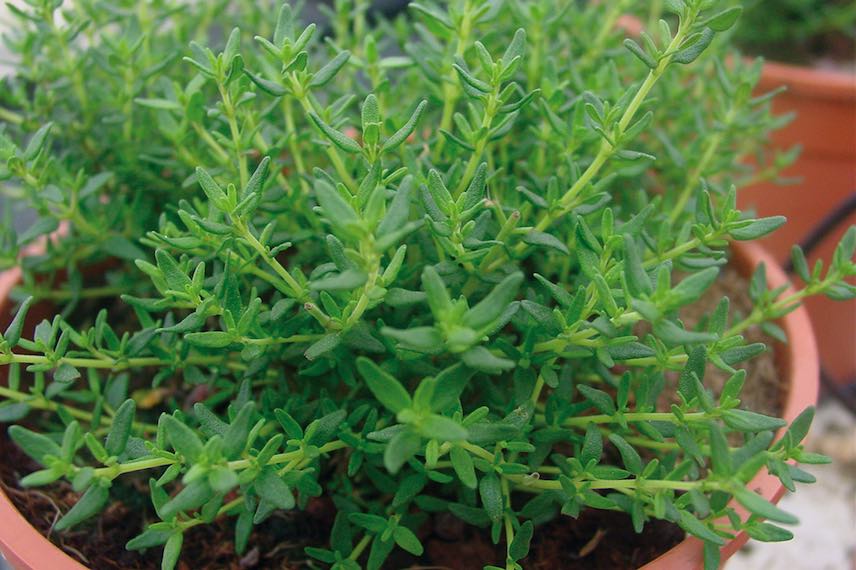
Thyme tends to thin out in the centre of the clump and needs annual pruning to keep a neat habit. You should prune thyme only after flowering. To do this, cut back the stems that are below the first flowers. In spring you can also remove stems that did not survive winter frost.
Harvest
Thyme can be harvested all year round to suit your needs! However, if you want to enjoy its full fragrance, favour late spring and early autumn, when the essential oils in the foliage are more concentrated. Then, let the twigs dry naturally in the sun, then store them in an airtight container.
For more on dried thyme, discover our tutorial: How to dry and properly store thyme?
Propagation
At any season, you can use propagation by cuttings or clump division to multiply your potted aromatic plant. However, wait a few years before undertaking this renewal of plantings, especially if you live outside Mediterranean-like conditions.
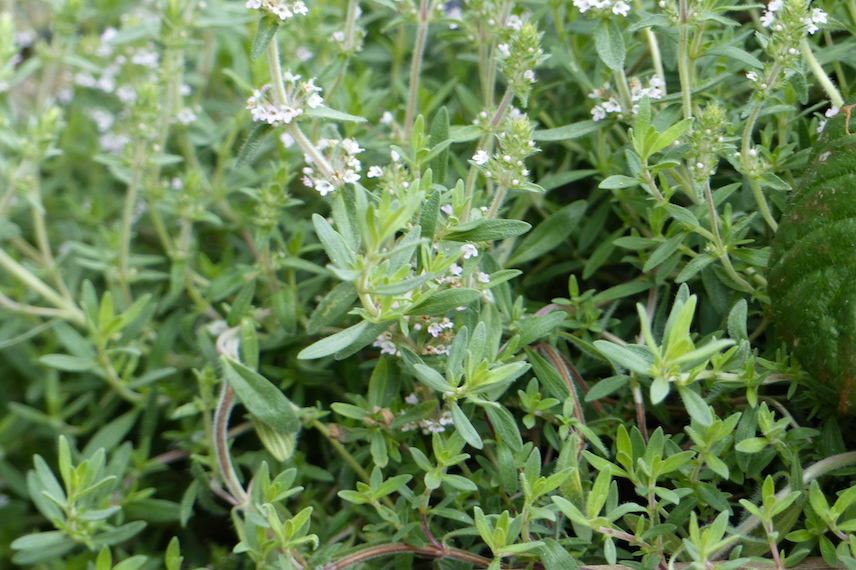
Preventing diseases
Thyme is most vulnerable to moisture. In a poorly drained pot or one exposed to standing water, it can quickly be affected by fungi and rot. Always control water supply so it is sufficient but never excessive!
Which varieties of thyme to plant in pots?
All thyme varieties can be grown in pots. Among the many, here are a few:
Common thyme
Do you have damp, clay soil? Your winter thyme will be particularly happy in a pot, because it needs poor, light, well-drained and possibly stony soil. This variety, more resistant to cold than others, also has the particularity of displaying greener foliage than Provence thyme.
Lemon thyme
If you are looking for a subtly scented thyme to grow in a pot, the golden lemon thyme will give full satisfaction. Producing attractive lilac-coloured flowers on a balcony or in a garden, the thymus citriodorus ‘Aureus’ prefers stony soil, easier to achieve in a pot.
Wild thyme
The wild thyme is a creeping variety that should be planted with care, as with all thyme varieties, to avoid excess moisture. Its leaves offer a gentle, subtle fragrance, less intense than that of common thyme.
Find out more
⇒ Our complete guide: Thyme: to grow, to plant, to prune.
- Subscribe!
- Contents
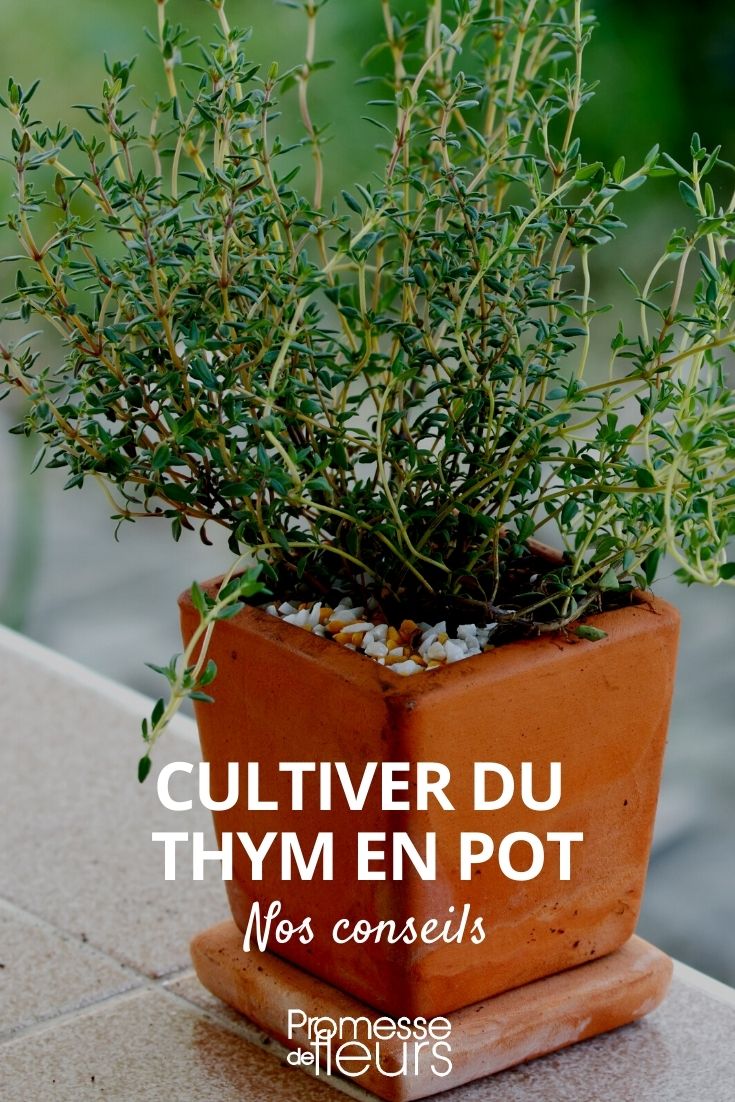































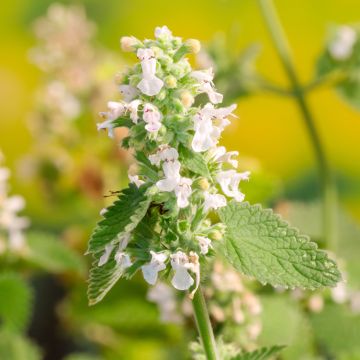
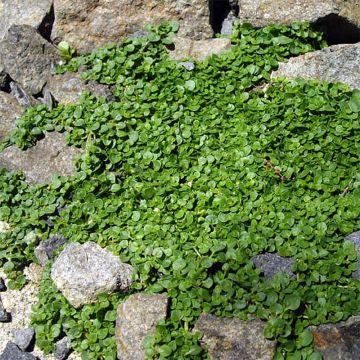
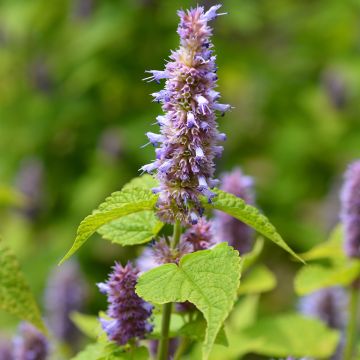
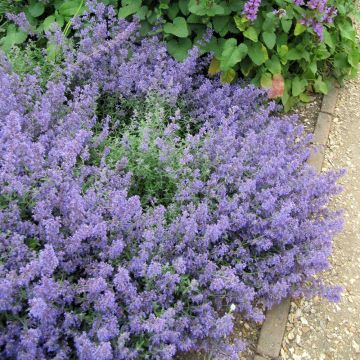
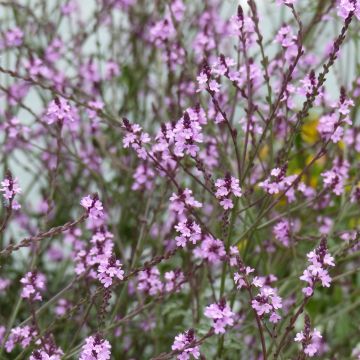
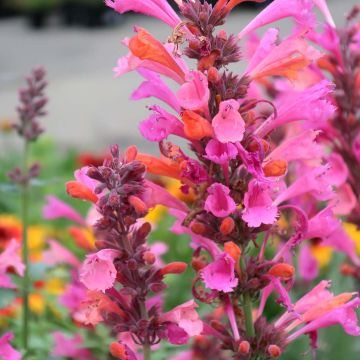

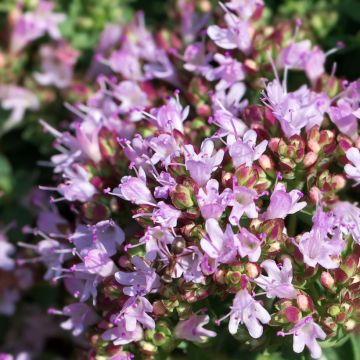
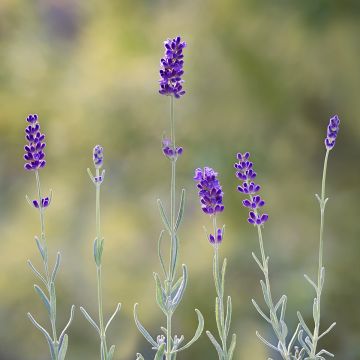
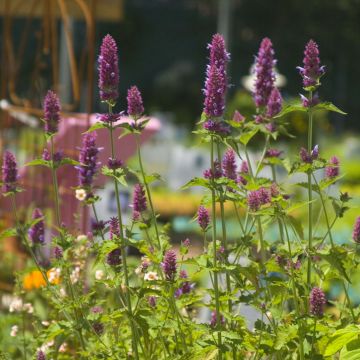
Comments